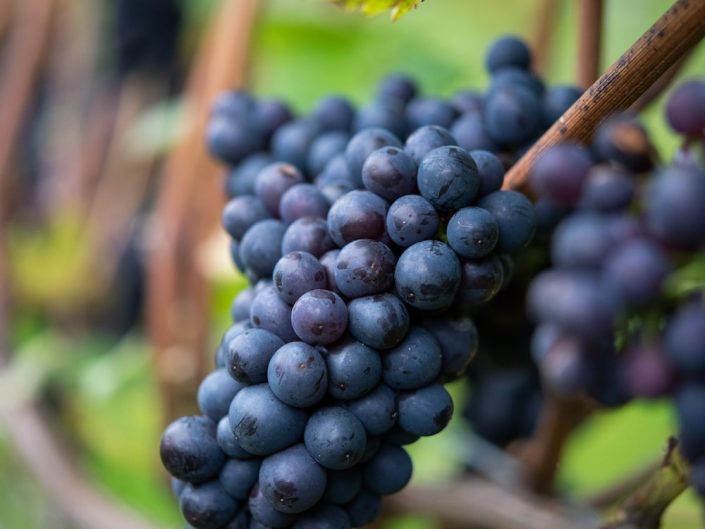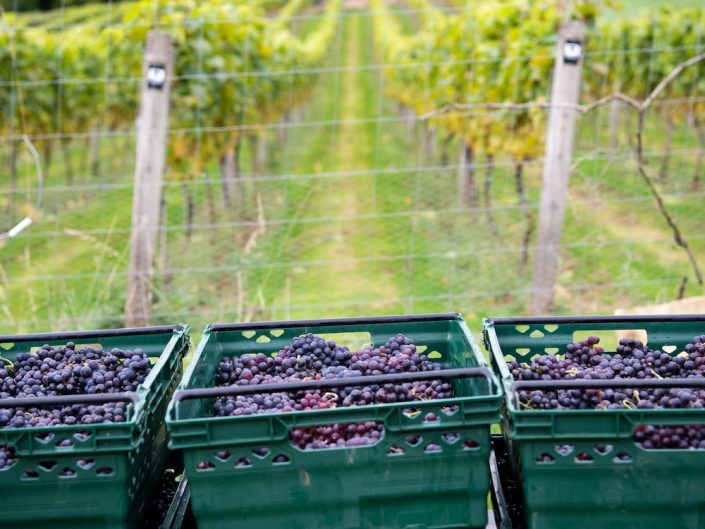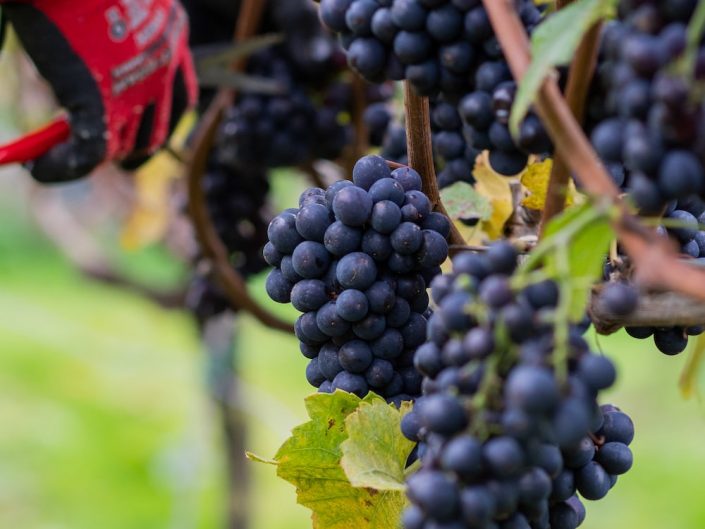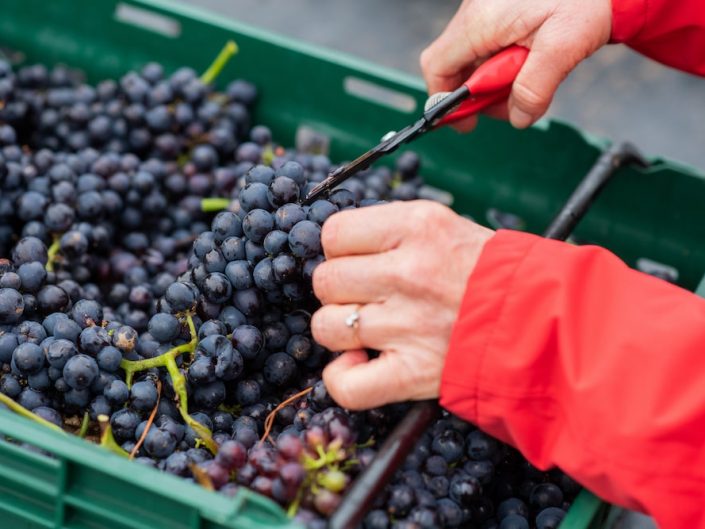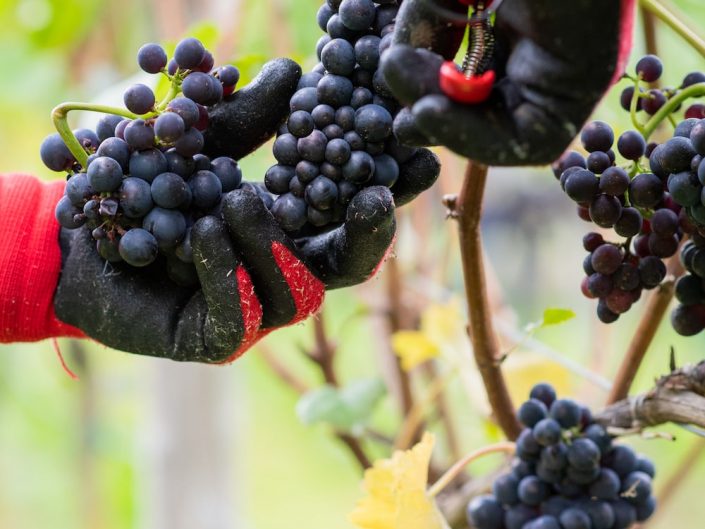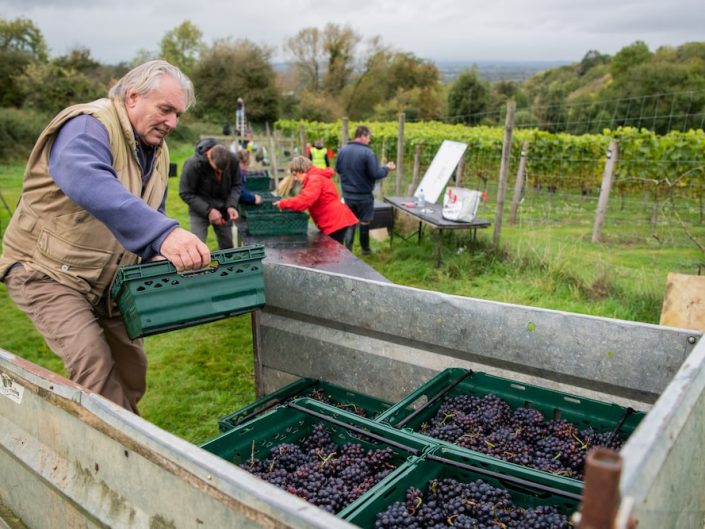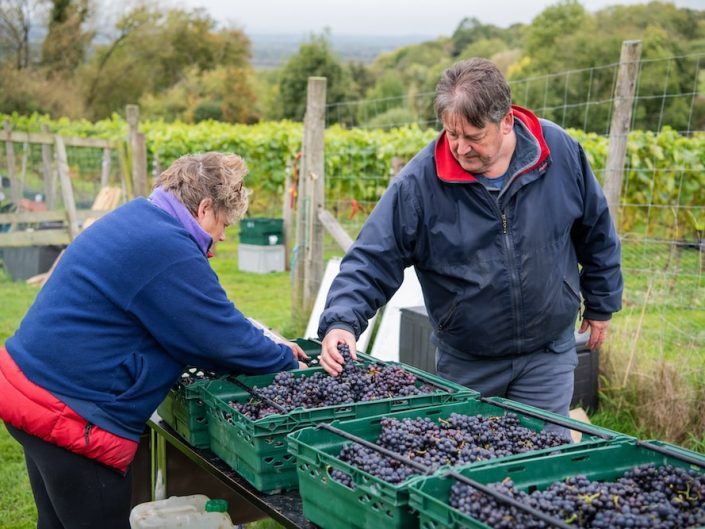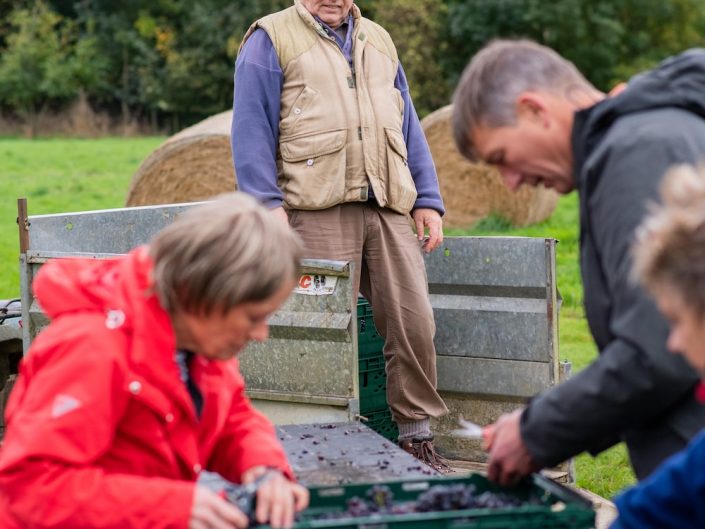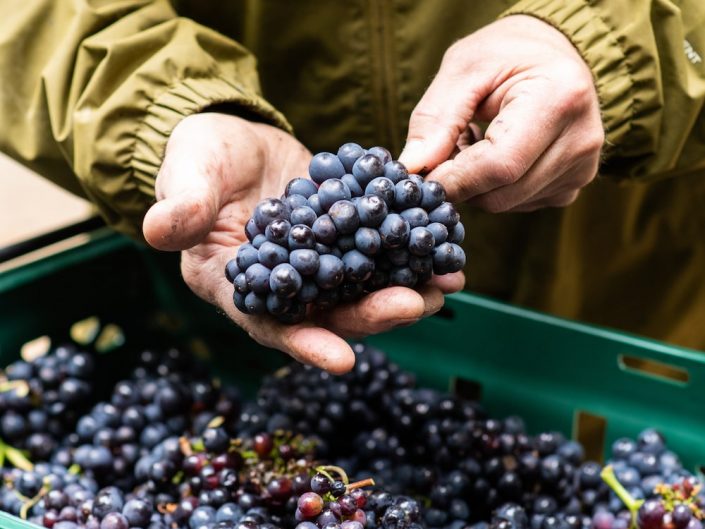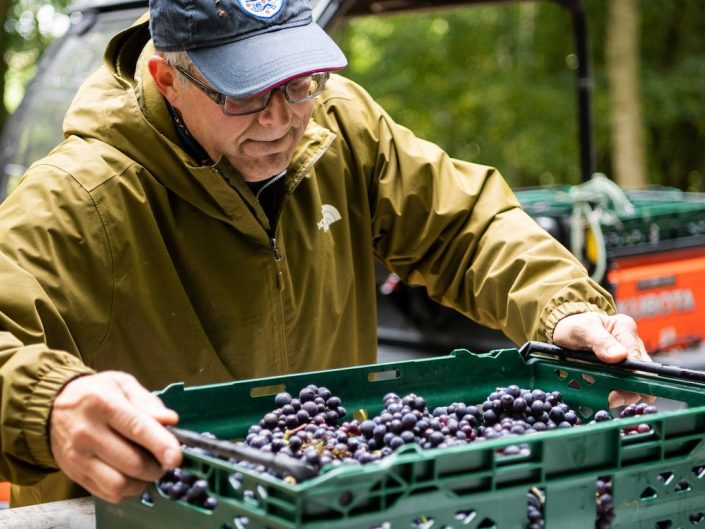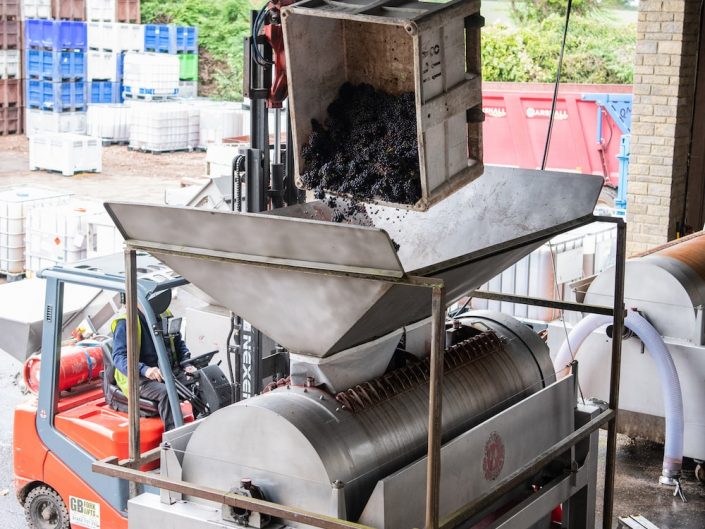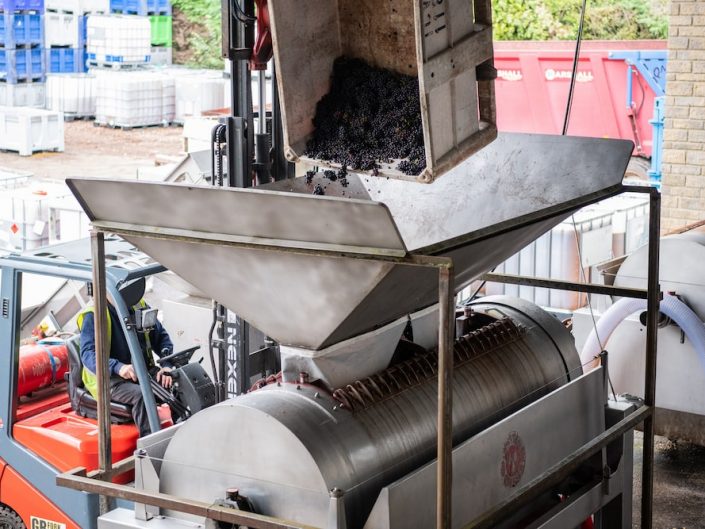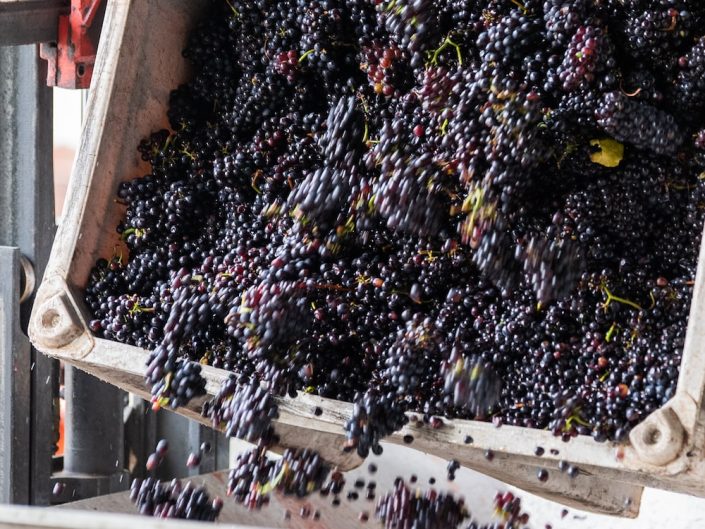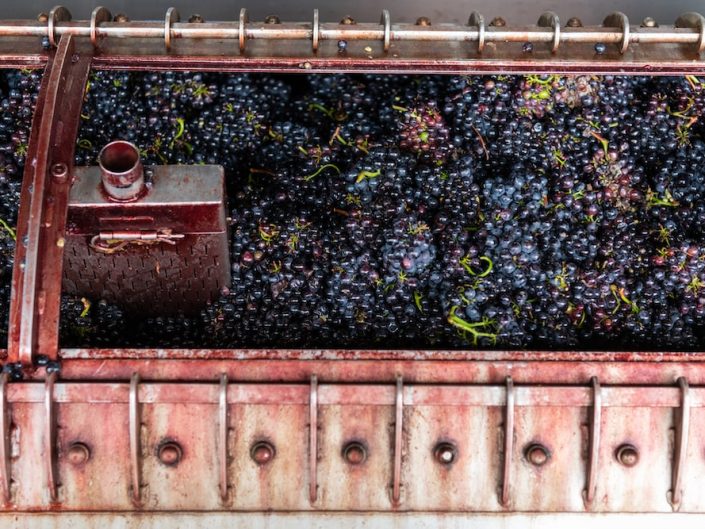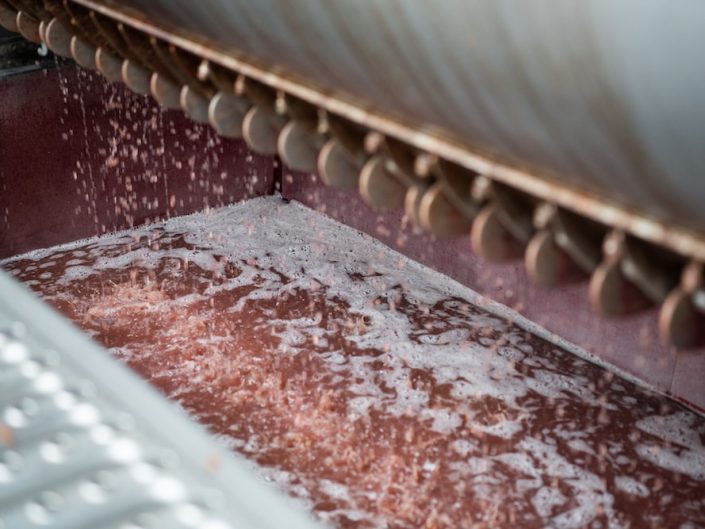HISTORY OF THE VINEYARD
Today, Dryhill is situated on land which formed an integral part of an ancient Roman “Villa Rustica”, an agricultural villa dating back to 76 AD. The nearby market town of Cirencester was the second-largest city in Roman Britain known as Corinium.
In 1615, King James I decreed that no English oak trees should be felled in our nearby Forest of Dean since he was keen to preserve them for building his warships for the British navy. Local glassmakers were thus forced to use the coal that was abundant in this Forest, to create glass bottles with impurities of iron and manganese. These dark glass containers were significantly stronger using this process.
In 1632, Sir Kenelm Digby, a Gloucestershire glassmaker from Newnham-on-Severn (a small town not far from Dryhill), was able to create stronger and darker bottles for the nearby cider industry, which helped preserve cider from the harmful effects of UV light. These bottles also featured a long neck, an indentation in the bottom for added strength and a collar or “string rim” for securing the cork.
Locally, cider makers including Silas Taylor perfected the art of adding a little sugar to each bottle of cider to create a secondary fermentation. This was bottled, corked and then left for 2-3 years to develop a superior flavour and depth.
In London, Christopher Merret applied this technique to wines imported in barrels from Northern France and he presented this method to The Royal Society in London, some 30 years before Dom Perignon was credited with creating sparkling wine in the Champagne area of Northern France.
Some, therefore, say that the county of Gloucestershire had a pivotal role in the evolution of the Champagne wine we enjoy today. To learn more about the history of Champagne in Gloucestershire click here.
LOCATION
The Dryhill vineyard is located on the side of the Cotswold limestone escarpment with a south-westerly aspect. Our particular microclimate is created by planting on a lower Roman terrace with its back protected to the north side by a raised fold in the land. This sunny location provides excellent conditions for the slow ripening of grapes. We harvest late to create a delicate balance between ripeness and acidity. Our focus is on producing the best quality fruit for our own use in sparkling wine with complexity and finesse.
As for the surrounding area, the historic Crickley Hill Country Park is nearby and Dryhill is just off the famous Cotswold Way. You will also find great golf, walking and horse riding opportunities on your doorstep.
One of the nearest towns is the beautiful Cheltenham Spa, making Dryhill a perfect holiday home if you are attending the Cheltenham Gold Cup, the Cheltenham Open or the range of jazz, science, music and literature festivals that Cheltenham has to offer. The market town of Cirencester, the capital of the Cotswolds, is a short drive away.
Dryhill nestles on the side of the Cotswold escarpment with breathtaking views to the west of over 50 miles: our sunsets are frequently stunning.
The vineyard is situated at around 150 metres above sea level. It is located in a small fold in the hill, with its back protected from the Northerly winds.
This unique microclimate has proven to be grape-friendly, let’s hope the Weather Gods keep smiling in times to come!
The soil here is generally thin and sits on free-draining Cotswold brash, fine granular stones and small rocks: a good combination of factors to create a wine with character.
Dryhill offers vineyard masterclasses for guests renting our properties, to give a unique insight into the workings of a vineyard, vine management, grape care and helpful harvest tips
Dryhill has arrangements with local wineries, including our production partners at 16 Ridges Wines, and exclusive tastings can be organised with advance notice. For those keen on tours to see local vineyards and wineries, please complete our contact form.
VINEYARD SKILLS TRAINING
Interested in learning how we take care of our grape vines? Why not learn the skills yourself by booking a one day practical course for you or a friend. The time spent in our vineyard will provide a fascinating insight into grape growing and will appeal to lovers of wine or bubbly, providing knowledge to share with your friends for years to come.
This vineyard course, which operates throughout the season, follows the annual growing pattern of our vines, until harvest in late October. Feel free get in touch here for more details.
Please click here for an example of the courses we operate.
